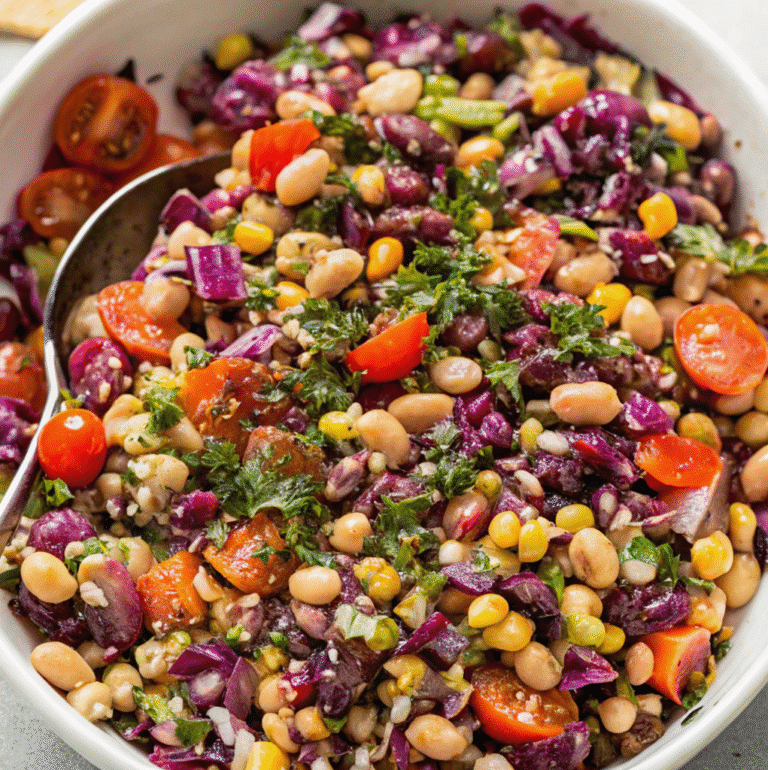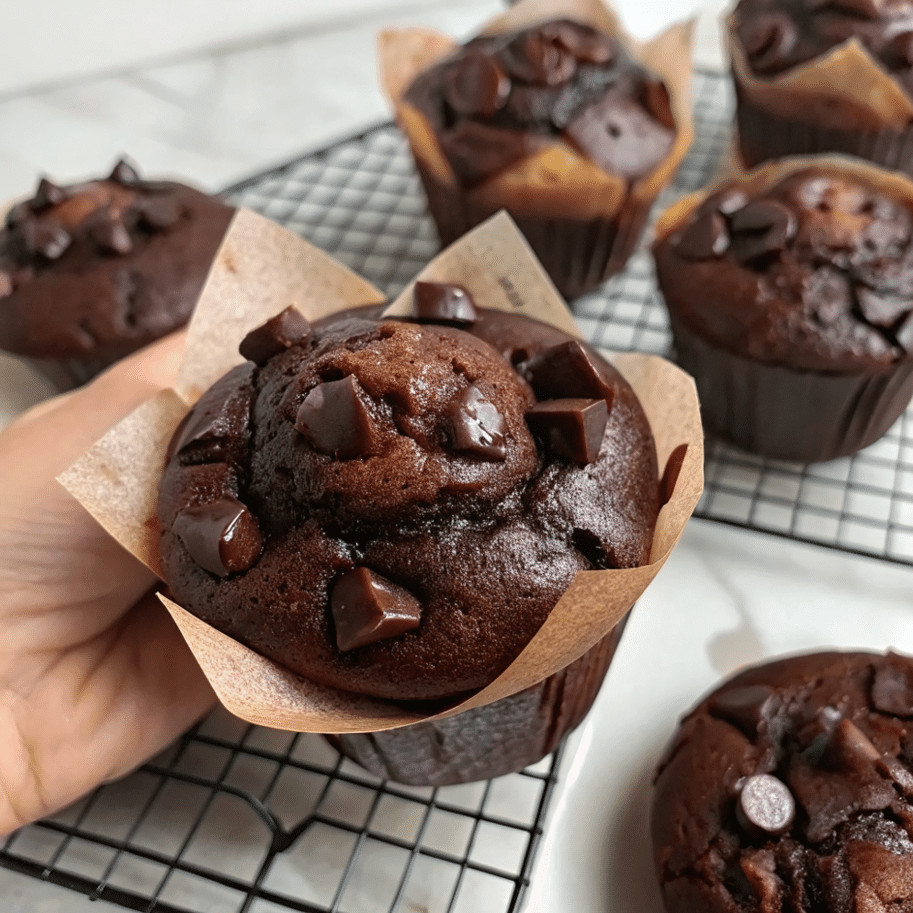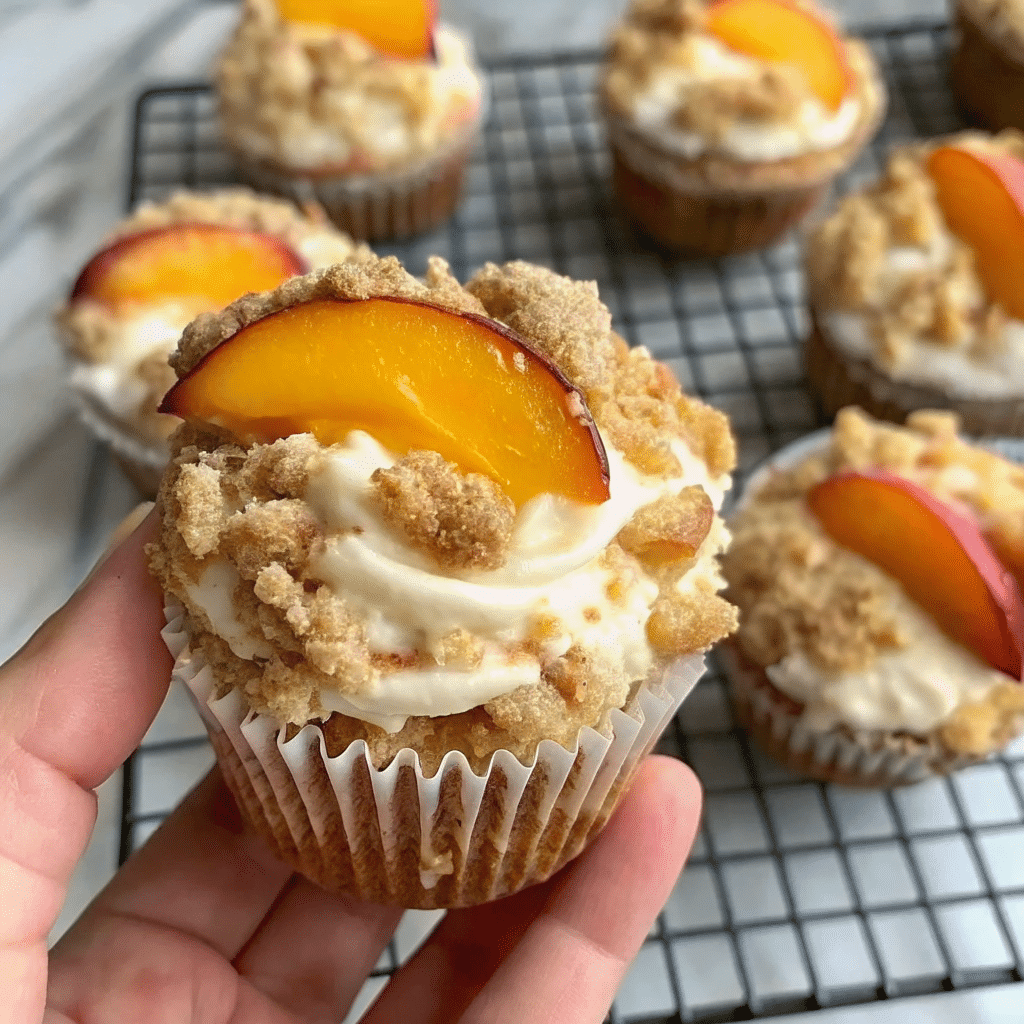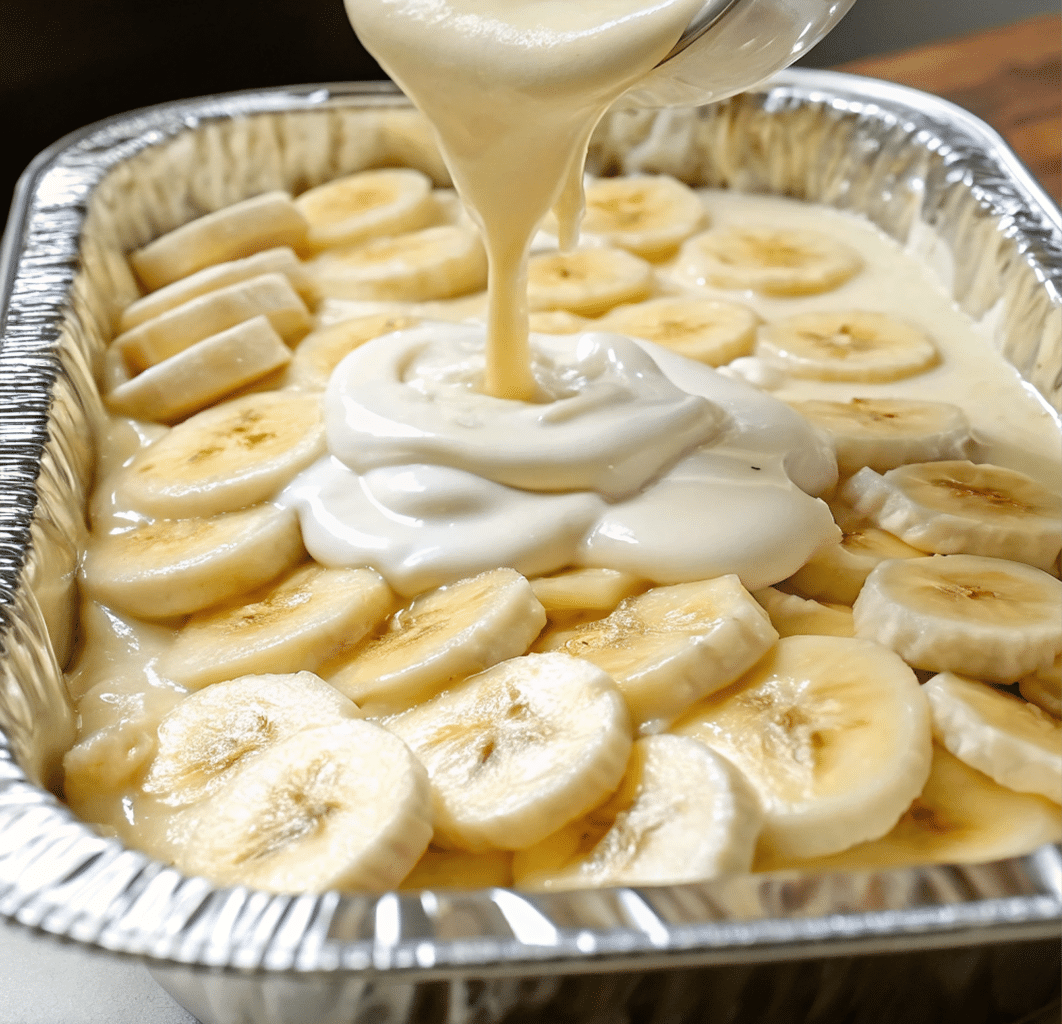Dense bean salad isn’t just a side dish—it’s a powerhouse of nutrition wrapped in vibrant, satisfying flavor. Whether you’re meal prepping for the week, feeding a hungry crowd, or simply trying to eat healthier without sacrificing taste, this guide dives deep into everything about dense bean salads. From ingredients and nutritional benefits to implementation tips and recipe breakdowns, we’ve got it all. You’ll also get expert answers to common questions like Are dense bean salads good for losing weight? and What are the most nutrient dense beans?

What is a Dense Bean Salad? A Brief Overview
A hearty bean salad mixes different kinds of beans with fiber-packed veggies and a tangy oil-based dressing. Unlike light, leafy salads, this one’s loaded with protein, fiber, and essential nutrients. It’s filling enough to be a full meal, thanks to its rich texture and balanced nutrition. With ingredients like black beans, pinto beans, corn, red cabbage, and Cotija cheese, this salad is anything but boring.
Table of Contents
Why Dense Bean Salads Matter for Your Health
Dense bean salads are nutrient-dense—meaning they pack a ton of nutritional value for relatively low calories. With 16.2g of protein, 8.8g of fiber, and 297 calories per serving, they promote satiety, gut health, and even muscle repair. Their low saturated fat content, absence of meat, and abundance of colorful vegetables make them a strong candidate for anyone focused on clean eating or plant-based nutrition.
The Growing Popularity of Dense Salads
As more people seek meatless meals and easy prep options, salads like this are gaining momentum. They’re great for weekly meal prep, budget-friendly, and can be made ahead with no loss of flavor. Thanks to ingredients like lime juice, jalapeños, and fresh herbs, they pack bold flavors that rival more indulgent dishes—without any guilt.
Check out our Homemade Big Mac Bowl to explore how high-protein bowls can fit into your healthy meal rotation.
Understanding the Core Concepts of Dense Bean Salad
Key Features of a Dense Bean Salad
Dense bean salads stand out because of their balanced macronutrients, vibrant textures, and layered flavors. Here’s what makes them special:
- Multiple types of beans: Using black, pinto, or cannellini beans adds a range of nutrients like iron, magnesium, and plant protein.
- Colorful vegetables: Red cabbage, cherry tomatoes, bell peppers, and corn offer antioxidants, vitamins A & C, and fiber.
- Tangy, herbaceous dressing: A blend of lime juice, garlic, white wine vinegar, and cumin offers zing without excessive fat or sugar.
- Crumbly cheese: Cotija cheese adds richness and salt, balancing the freshness of the veggies.
With every bite, you’re getting a medley of textures—crunchy cabbage, creamy beans, and juicy tomatoes—making it a satisfying meal that doesn’t feel like a “diet food.”
Discover great ideas like our Hot Honey Ground Beef Bowls for another satisfying bowl-based dish.
How a Dense Bean Salad Works: The Basics Explained
The secret behind a dense bean salad’s staying power lies in its macronutrient synergy. Here’s how each component works together:
| Component | Nutritional Benefit | Role in Satiety |
|---|---|---|
| Beans | High in fiber and protein | Keeps you full |
| Vegetables | Low-calorie, vitamin-rich | Adds bulk, aids digestion |
| Dressing | Healthy fat, herbs, and acids | Flavor delivery, nutrient absorption |
| Cheese (optional) | Adds protein and calcium | Enhances taste and texture |
Every bite gives you energy and hits the spot. Beans are a standout, packing over 16 grams of plant-based protein per serving—that’s almost a third of what most adults need in a day.
The Role of Dense Bean Salads in Everyday Life
Dense bean salads aren’t limited to lunchboxes. They’re:
- Meal prep-friendly: Stays fresh for up to 5 days in the fridge.
- Customizable: Swap out vegetables or cheeses depending on dietary preferences.
- Eco-conscious: Plant-based meals like these reduce your carbon footprint compared to meat-heavy dishes.
You can serve it chilled on hot days, add grilled tofu or avocado for extra nutrition, or even tuck it into wraps for a quick lunch option.
According to Healthline, foods that deliver the highest levels of essential nutrients per calorie are considered the most nutrient-dense. Dense bean salad features many such ingredients—including beans, red cabbage, and tomatoes—making it a powerful addition to a balanced diet.
The Benefits of Dense Bean Salad for Your Health and Lifestyle
Increased Efficiency and Productivity Through Nutrition
Eating well fuels your brain and body. Dense bean salads are rich in complex carbohydrates, plant protein, and essential vitamins, providing sustained energy. Unlike sugary snacks or heavy meals that leave you sluggish, this salad:
- Releases energy slowly due to high fiber content
- Stabilizes blood sugar levels
- Improves cognitive function and focus
The high fiber (8.8g) and protein (16.2g) content per serving mean it keeps you feeling full and alert, making it ideal for workdays, study sessions, or post-gym recovery.
Learn more about quick and energizing options like our Cloud Coffee to pair with your meal.
Cost Savings and Return on Investment (ROI)
Dense bean salads are not just healthy—they’re budget-friendly. Here’s why they’re smart on your wallet:
- Canned beans are low-cost and shelf-stable
- Fresh veggies like cabbage and peppers are affordable and easy to prep
- Bulk meals: This recipe yields 12 cups, enough for 6–8 servings
Let’s break down the average cost:
| Ingredient | Approx. Cost |
|---|---|
| 2 cans beans | $2.00 |
| 2 bell peppers | $2.00 |
| Cherry tomatoes | $2.50 |
| Red cabbage | $1.50 |
| Cilantro & onion | $1.00 |
| Cojita cheese | $3.00 |
| Dressing ingredients | $2.50 |
| Total (8 servings) | $14.50 |
| Cost per serving | $1.81 |
With less than $2 per serving, it’s cheaper than most fast food—and far better for you.
Boosting Your Body Image and Health Goals
Trying to lose weight or eat more plant-based meals? This salad is:
- Low in saturated fat
- High in fiber, keeping you fuller longer
- Protein-rich, promoting muscle health
And yes—dense bean salads are good for losing weight. They reduce overeating and help you manage portion control without depriving yourself of flavors or nutrients.
Common Misconceptions About Dense Bean Salad
Debunking Myths Around Dense Bean Salads
Even though they’re good for you, hearty bean salads don’t always get the love they deserve. So let’s set the record straight on a few common myths:
- Myth #1: Bean salads are boring
Not even close. With layers of flavor from lime juice, jalapeños, cumin, and Cotija cheese, this recipe is anything but bland. - Myth #2: Beans are just carbs
Beans do have carbs, but they’re also packed with protein and fiber. With 16.2 grams of protein per serving, they’re actually pretty similar to meat in that way. - Myth #3: They’re only for vegetarians
Dense bean salads are great for everyone, including omnivores. They can stand alone or serve as a healthy side to fish, grilled chicken, or even steak.
What People Often Get Wrong About Beans vs. Vegetables
A common misconception is that beans aren’t as healthy as green veggies. But guess what? Beans actually count as both a vegetable and a protein source according to the USDA.
Let’s compare:
| Nutrient | Beans (1 cup) | Broccoli (1 cup) |
|---|---|---|
| Protein | 15g | 2.6g |
| Fiber | 15g | 2.4g |
| Iron | 20% DV | 4% DV |
| Calories | 227 | 31 |
Sure, leafy greens are low in calories and rich in antioxidants—but beans provide more satiety, protein, and iron, making them an excellent staple food.
Understanding the Facts Behind Daily Bean Consumption
Another question that floats around: Can I eat beans every day? The answer? Absolutely.
Beans are linked to:
- Lower cholesterol
- Better blood sugar control
- Improved gut health
There’s a reason why blue zone populations, known for longevity, consume legumes daily. If you’re worried about digestion, start small and drink plenty of water—your body will adjust.
How to Implement Dense Bean Salad in Your Meal Plan
Meal Prep Made Easy with Dense Bean Salad
One of the best things about dense bean salad is how easy it is to incorporate into your meal prep routine. Here’s how to streamline the process for a week’s worth of healthy, protein-packed meals:
- Batch cooking beans: If you prefer using dried beans, cook them in bulk and store them in the fridge for up to 4-5 days. Canned beans are a quick, convenient option with the same nutritional benefits.
- Chop once, use twice: Dice your bell peppers, onions, and cabbage for multiple salads or even stir-fries.
- Keep dressing separate: To prevent soggy salads, store the dressing in a separate container and toss it just before serving. It helps maintain the crispness of the vegetables and beans.
This meal can be made in large quantities, meaning less effort during the week. For a typical week’s worth of servings, divide the salad into 4-5 containers—your go-to lunch or dinner options!
Discover great ideas like our Cottage Cheese Banana Bread that pairs well with a hearty salad for breakfast.
How to Enjoy Dense Bean Salad Beyond Lunch
While perfect as a standalone meal, dense bean salads can easily be used in other meal contexts:
- Wrap it up: Use the salad as a filling for wraps or burritos.
- Taco Tuesday: Add a scoop to soft tortillas and top with extra salsa and avocado for a quick, nutritious taco filling.
- Top a baked potato: Instead of butter or sour cream, use this salad as a colorful and healthy topping.
You can also experiment by adding a protein boost—grilled chicken, seared tofu, or even boiled eggs are great additions.
Pairing Dense Bean Salad with Other Superfoods
Want to amp up your salad’s superfood status? Here’s how:
- Avocado: High in healthy fats and potassium, it pairs perfectly with the tangy lime dressing.
- Tofu: For an extra punch of protein, add cubes of pan-fried tofu.
- Quinoa: This ancient grain brings additional fiber and protein, making the salad more filling.
You can easily adapt the salad to suit your needs or cravings by incorporating these superfoods for an extra nutritional boost.

Nutritional Breakdown: Why Dense Bean Salad is a Superfood
The Nutrient Powerhouse in Every Bite
Dense bean salads are packed with nutrient-dense ingredients, meaning you’re getting a high concentration of essential vitamins, minerals, and macronutrients in every serving. Let’s break down some of the star ingredients and their health benefits:
- Beans: Packed with plant protein (16.2g per serving) and fiber (8.8g), beans contribute to muscle repair, digestion, and heart health. They also stabilize blood sugar, making them an excellent food choice for people with diabetes or those managing weight.
- Red Cabbage: Rich in vitamin C, vitamin K, and antioxidants, red cabbage helps combat oxidative stress, support immunity, and improve bone health.
- Tomatoes: High in lycopene, an antioxidant, tomatoes protect the skin from UV damage and support heart health.
- Cilantro: Full of vitamin A and vitamin K, cilantro promotes healthy vision and blood clotting, while also adding a fresh, herby flavor.
- Cojita Cheese: While providing a dose of calcium and protein, this cheese also gives the salad a rich, salty flavor, balancing out the acidity of the dressing.
- Jalapeños: Rich in vitamin C and capsaicin, the compound that gives them their heat, jalapeños promote metabolism, improve circulation, and reduce inflammation.
Health Benefits of the Ingredients Combined
When combined, these ingredients don’t just complement each other in taste—they work synergistically for your health. Here’s how:
- Heart health: The high fiber, antioxidants, and plant-based proteins from beans, cabbage, and tomatoes can reduce cholesterol and improve blood pressure.
- Digestive health: The fiber from beans and vegetables keeps the digestive system running smoothly, preventing constipation and supporting gut health.
- Weight management: Thanks to the low-calorie, high-protein nature of this salad, it helps you feel full for longer and reduces the likelihood of overeating. Protein in beans, combined with the fiber from vegetables, creates a filling, yet low-calorie meal option.
- Anti-inflammatory properties: Jalapeños, cilantro, and cabbage provide anti-inflammatory benefits, which can reduce the risk of chronic diseases such as arthritis, diabetes, and even heart disease.
Supercharge Your Daily Routine with Dense Bean Salad
The beauty of a dense bean salad is that it’s easy to make and serves as a superfood-packed meal that provides everything your body needs for sustained energy, improved metabolism, and long-term health.
By regularly including this type of salad in your meal plan, you’re investing in your health, lowering the risk of chronic diseases, and boosting overall wellness.
Common Variations of Dense Bean Salad
Customizing Your Dense Bean Salad for Dietary Needs
One of the best things about dense bean salads is how versatile they are. Whether you’re looking to cater to specific dietary preferences or need to make use of what’s in season, you can easily adapt this recipe. Let’s look at some popular variations to suit different needs:
- Vegan Dense Bean Salad
Remove the Cojita cheese or swap it for a plant-based cheese alternative. You can also add extra avocado or roasted chickpeas for crunch and creaminess. - Gluten-Free
This recipe is naturally gluten-free, so there’s no need for modification. It’s perfect for anyone following a gluten-free diet. - Low-Carb Option
To reduce the carbs in the salad, skip the corn or replace it with zucchini noodles or extra cabbage. This keeps the salad just as filling without the added carbs. - High-Protein Variations
Looking to up your protein intake? Add a serving of grilled tofu, chicken, or quinoa for an even more protein-packed meal. Tofu is a great plant-based option, providing healthy fats and additional protein.
Seasonal Variations
If you want to make the most out of the produce available throughout the year, try incorporating seasonal veggies:
- Spring/Summer: Add cucumber, avocado, or fresh peas for a lighter, refreshing version.
- Fall/Winter: Roast sweet potatoes, butternut squash, or brussels sprouts and toss them in for a heartier, warm version of the salad.
Flavor Variations for Diverse Tastes
A dense bean salad can easily be modified to accommodate different flavor profiles. Try one of these ideas:
- Mexican-Inspired: Swap out the cumin for chipotle powder, and add in some black olives, avocado, and a little sour cream or Greek yogurt for creaminess.
- Mediterranean Twist: Use kalamata olives, cucumber, and feta cheese (or vegan feta) instead of Cojita cheese. You can even toss in some oregano and lemon juice for a tangy flair.
- Asian-Inspired: Add sesame oil, ginger, and rice vinegar for an Asian twist. For crunch, sprinkle some toasted sesame seeds or chopped peanuts.
Spicy Variations
If you love heat, here are some ways to increase the spice level:
- Add more jalapeños: Use extra jalapeños or try serrano peppers for an even hotter kick.
- Incorporate chili flakes: A sprinkle of red chili flakes or Sriracha can bring your salad to the next level of spice.
For those who like things mild, you can opt to leave out the jalapeños or replace them with mild bell peppers for a touch of sweetness.
How Dense Bean Salad Can Support a Weight-Loss Journey
Why Dense Bean Salad is Ideal for Weight Loss
If you’re looking to shed a few pounds, the dense bean salad is a fantastic addition to your meal plan. Here’s why:
- High Protein Content
Protein plays a big role in weight loss. One serving of this salad gives you 16.2 grams, which helps you feel full longer, cuts down on cravings, and keeps your muscle mass while you’re losing weight. Plus, your body uses more energy to digest protein than it does for fats or carbs, so you burn more calories just by eating it. - High Fiber for Fullness
With 8.8g of fiber per serving, this salad is a powerful appetite controller. Fiber slows digestion, keeping you feeling fuller for longer, which reduces the likelihood of overeating. A fiber-rich diet also supports digestive health and keeps your metabolism running efficiently. - Low in Calories, High in Volume
At just 297 calories per serving, dense bean salad offers a nutrient-dense, low-calorie meal that can be eaten in generous portions. The large volume of vegetables and beans helps fill you up, making it a great choice for people looking to reduce overall calorie intake without feeling deprived. - Low Glycemic Load
Hearty bean salads are naturally low on the glycemic index, so they won’t cause big blood sugar spikes. That means they give you steady energy, help keep cravings in check, and keep your blood sugar more balanced throughout the day.
Incorporating Dense Bean Salad into a Balanced Weight-Loss Plan
Dense bean salad isn’t just a side dish; it can be the main event of your weight-loss meals. Here are some strategies to integrate this salad into your diet:
- Lunch or Dinner: Have it as your main meal. The combination of protein, fiber, and healthy fats will leave you feeling full without extra calories.
- Pre-Workout Snack: The carbs in beans and the protein in cheese team up to give you steady energy that lasts through your workout.
- As a Side: Pair it with a lean protein like grilled chicken or tofu for a balanced, low-calorie dinner.
Portion Control and Mindful Eating
One of the biggest struggles in weight loss is controlling portions. With a high-volume, low-calorie salad like this, you can eat more while staying on track with your calorie goals. Here’s how to use this to your advantage:
- Mindful Eating: Focus on the textures and flavors of each bite, and avoid distractions like TV or phones. This helps your brain register fullness signals, reducing the likelihood of overeating.
- Serving Sizes: Pre-portion your salad into meal prep containers so you have a healthy, ready-to-go meal whenever hunger strikes.
Practical Tips for Weight Loss with Dense Bean Salad
- Drink lots of water with your meal. Sometimes we think we’re hungry when we’re really just thirsty, which can lead to extra snacking.
- Stay Active: Pair your healthy meals with regular physical activity. Beans provide sustained energy for workouts, while the fiber and protein help your muscles recover.
By adding this salad into your weight-loss routine, you’ll not only be nourishing your body but also fueling it with the right ingredients to stay full and energized throughout the day.
FAQ – Frequently Asked Questions
What makes a dense bean salad?
A dense bean salad is packed with protein-rich beans, fiber, and a variety of fresh vegetables, making it a nutritious, hearty meal. The combination of beans like black, pinto, or cannellini beans with colorful veggies like bell peppers, tomatoes, and cabbage makes the salad both filling and nutrient-dense.
Are dense bean salads good for losing weight?
Yes! Dense bean salads are excellent for weight loss due to their high fiber and protein content, both of which help keep you full for longer. Plus, they’re low in calories while being nutrient-packed, making them perfect for a filling meal that doesn’t overeat your calorie budget.
What is the most nutrient-dense salad?
The most nutrient-dense salad is one that includes a balance of leafy greens, lean proteins, and healthy fats. A dense bean salad fits the bill perfectly with its mix of beans, fresh vegetables, and healthy fats from the dressing.
What are the most nutrient-dense beans?
Beans like black beans, kidney beans, and lentils are all nutrient-dense, providing an excellent source of protein, fiber, vitamins, and minerals. Beans are also known for their ability to stabilize blood sugar and improve digestive health.
Can I eat beans every day?
Yes, eating beans every day is healthy! They are an excellent source of plant-based protein, fiber, and essential vitamins and minerals. Just be sure to drink plenty of water, as beans can sometimes cause bloating due to their fiber content.
Which bean is a superfood?
Mung beans and black beans are considered superfoods because they are nutrient-dense, high in protein, antioxidants, and fiber, and can help with digestion, lower cholesterol, and reduce the risk of chronic diseases.
Which bean is the highest in protein?
Among common beans, soybeans are the highest in protein, containing around 28 grams of protein per cup when cooked. Black beans, kidney beans, and lentils are also excellent sources of protein, making them great choices for vegetarians and vegans.
Is tofu good or bad?
Tofu is a healthy option for those looking for plant-based protein. It’s low in calories, high in protein, and provides healthy fats, calcium, and iron. Tofu can be part of a balanced diet but should be consumed in moderation as part of a varied diet.
Are beans healthier than vegetables?
Beans and vegetables are both incredibly healthy and offer unique benefits. While beans provide protein and fiber, vegetables offer a wide range of vitamins, minerals, and antioxidants. Ideally, a balanced diet includes both beans and vegetables for optimal health.
Why Dense Bean Salad Should Be Your Go-To Meal
Dense bean salad isn’t just a meal; it’s a powerhouse of nutrition. Packed with high-quality protein, fiber, and a variety of essential vitamins and minerals, this salad offers both taste and health benefits in every bite. Whether you’re trying to lose weight, increase your protein intake, or simply enjoy a vibrant, satisfying meal, this salad is an ideal choice.
By incorporating fresh veggies, healthy fats, and nutrient-dense beans, you can make a meal that supports your long-term health goals. Plus, it’s easy to customize to suit your dietary needs and preferences, from vegan to gluten-free or even spicy!
Make it a part of your meal plan for the week, and you’ll find yourself feeling full, energized, and on track to maintain a balanced, healthy lifestyle.
Print
Dense Bean Salad Recipe
This protein-packed, fiber-rich dense bean salad is the ultimate make-ahead dish for weight loss and meal prep. Loaded with beans, veggies, Cojita cheese, and a zesty lime vinaigrette, it’s fresh, hearty, and deeply satisfying.
- Total Time: 45 minutes
- Yield: 6 to 8 servings
Ingredients
For the dressing:
2 cloves garlic, peeled
Finely grated zest of 2 medium limes (about 2 tablespoons)
Juice of 2 medium limes (about 1/4 cup)
1/2 medium jalapeño pepper, seeded and quartered
1/2 cup fresh cilantro leaves and tender stems (from about 1/2 bunch)
1/4 cup white wine vinegar
1 1/2 teaspoons kosher salt
1 teaspoon ground cumin
1/2 cup neutral oil, such as vegetable or avocado
For the salad:
2 (15 oz) cans beans (black, pinto, or cannellini), drained and rinsed
2 medium bell peppers, diced (about 3 cups)
2 cups cherry or grape tomatoes, halved or quartered
1 1/2 cups fresh or frozen corn kernels (thawed if frozen)
3 3/4 cups finely chopped red cabbage (about 1/2 small head)
3/4 cup diced red onion (about 1/2 medium)
1/2 cup finely chopped fresh cilantro leaves and tender stems
1/2 medium jalapeño pepper, seeded and minced
6 oz crumbled Cojita cheese (about 1 1/2 cups)
Instructions
1. Blend garlic, lime zest and juice, jalapeño, cilantro, vinegar, salt, and cumin together in a blender until smooth.
2. With the machine running, slowly drizzle in the oil and blend until emulsified.
3. In a large bowl, combine beans, bell peppers, tomatoes, corn, cabbage, onion, cilantro, minced jalapeño, and Cotija cheese.
4. Pour the dressing over the salad and toss to coat.
5. Serve chilled or at room temperature.
Notes
Make ahead: The salad can be prepared up to 1 day in advance and stored in an airtight container in the refrigerator.
Storage: Refrigerate leftovers in an airtight container for up to 5 days.
- Prep Time: 45 minutes
- Cook Time: 0 minutes
- Category: Salad
- Method: No Cook
- Cuisine: American
- Diet: Vegetarian





